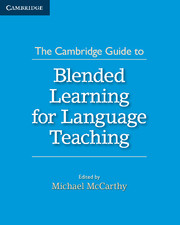Chapter 9 - Developing Activities and Materials to Support Effective Interaction Online
Published online by Cambridge University Press: 22 September 2021
Summary
INTRODUCTION
Developing activities and materials to support and encourage authentic interaction among learners in blended learning (BL) courses is challenging but not impossible. This chapter examines why the blended approach requires some general ‘rethinking’ of commonly held notions, and explores the advantages and drawbacks of a variety of activities and materials used in three different BL contexts to help paint a more detailed picture of the pedagogical implications of BL in different settings.
The chapter begins with the assumption that BL is not only meant to supplement, but also to transform the learning process with the additional aim of improving its quality. In other words, using a computer and an interactive whiteboard to show exactly the same old reading passage with the same old reading comprehension questions as teachers did two decades ago on the blackboard cannot be considered to be BL. According to Education Elements (educationelements.com), successful BL occurs when technology helps carefully selected dynamic materials (see also Mishan, Chapter 8, this volume) reach and motivate students of varying learning styles. As opposed to a traditional course, in a ‘flipped classroom’ teachers and trainers use online media to share presentations, documents or audiovisual materials with their learners and to give them tasks that they can do at home at their own pace (Education Elements ). As a result, in a blended course, classroom periods are ideally transformed into interactive practical sessions where teacher and students are free to engage in small group or whole class discussions, role-plays or other performing activities for which personal presence is essential (Johnson and Marsh, Chapter 4, this volume).
RETHINKING RULES AND ROLES WITHIN THE BLENDED LEARNING CONTEXT
If both the face-to-face and online materials and activities are well planned and implemented, then this practice seems to reinforce student-centred learning as in the settings described in this chapter, allowing students to master most of the content in their own preferred way. Instead of traditional frontal teaching and a linear transmission and regurgitation of knowledge, active involvement is expected from learners in creating course content, and the responsibility for their own progress will be to a much greater extent in their own hands.
Information
- Type
- Chapter
- Information
- The Cambridge Guide to Blended Learning for Language Teaching , pp. 139 - 160Publisher: Cambridge University PressPrint publication year: 2015
